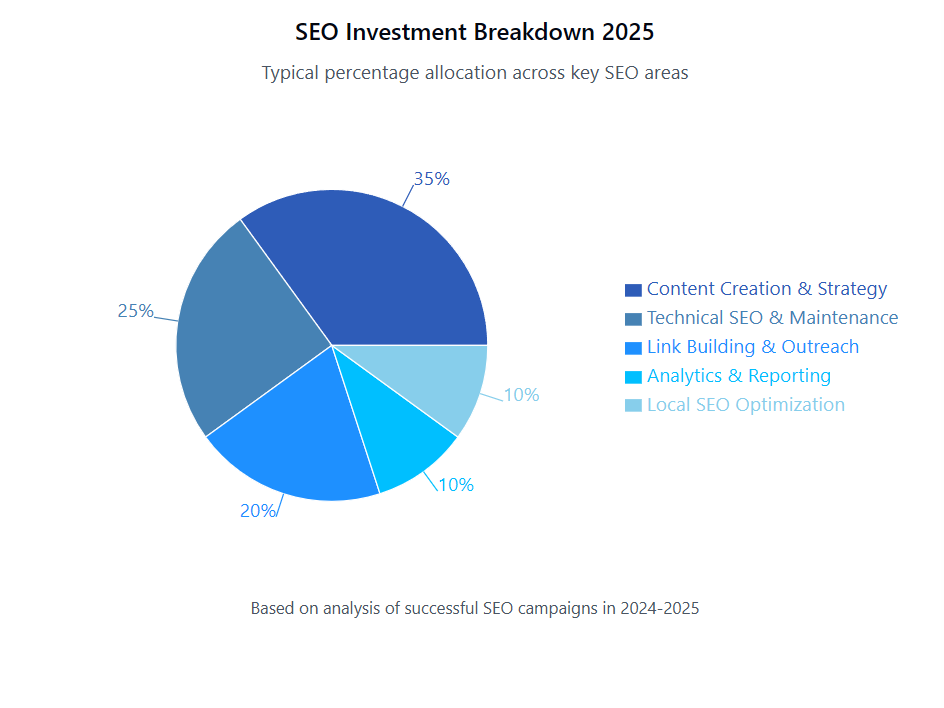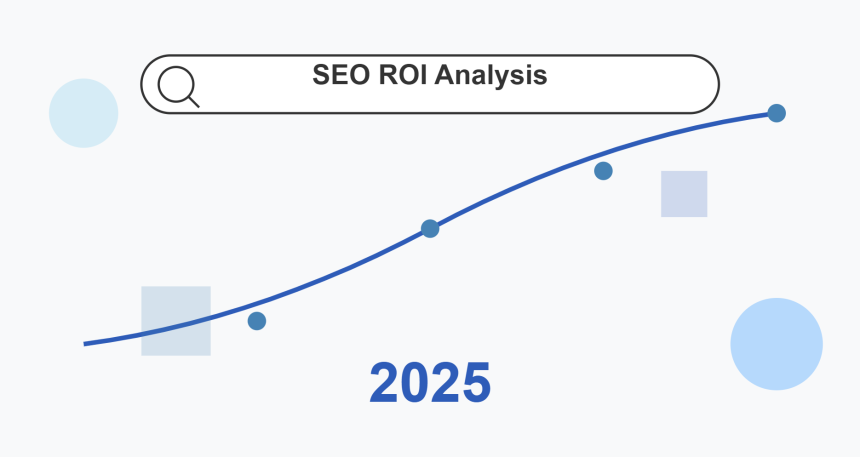Is SEO Worth It in 2025? A Data-Driven ROI Analysis from 25+ Years in the Field
In 1998, the SEO business was really different – Alta Vista was still a major player, and Google wasn’t even born yet.
As technology and digital marketing strategies continue to evolve, one constant remains: companies must be found in the places where their customers are searching.
Today I divide my time between Perth and Bali, providing a perspective that is truly international and local in turn.
What has struck me is that though the tactics of SEO have become increasingly high-tech, their essence or value proposition remains fundamentally the same.
The Evolution of SEO and the Value Within: A Practitioner’s Take
Back when I first entered the world of SEO in 1998, everything looked different. The main search engine was Altavista; Google did not yet exist.
From each algorithm update to all such digital changes afterward, one truth has prevailed:
businesses absolutely must be where people search for them so they can find you.
A third good position is mine now: the cities of both Perth and Bali come straight into line with this thinking.
But what I noticed is that while some aspects of website optimization have become more complex than ever before, the basic valuations have actually grown stronger.
Beyond simple rankings: let me tell you about something that shows all this
Just last week I was reviewing analytics with The Lawncare Man, a Perth-based lawn care specialist.
Since launching their SEO campaign in May 2019, they have achieved a 53% increase in organic traffic.
However, interesting to see is how this translated into real business success—for that matter also capital returns.
“We are thrilled by the results,” declared Miss Tanya Hawtin from The Lawncare Man.
Like many of my clients, they found that the value of SEO goes far beyond rankings; it is about providing a steady flow of good quality leads.
Breaking Down Modern SEO Investment
Let’s talk real numbers.
In my experience, here’s what businesses typically invest in professional SEO services:
Initial Investment Components
- Technical site audit and remediation
- Content strategy development
- On-page optimization
- Local SEO implementation
- Performance optimization
Constant Investment Areas
- Content creation and enhancement
- Technical maintenance
- Strategic adjustments
- Performance monitoring
- Competitive analysis
A Breakdown of Investment in SEO – 2025

The verdict: Case Studies from my Portfolio
Case Study 1: The Lawncare Man’s Digital Transformation
When we were approached by The Lawncare Man, they had several key difficulties:
- Limited organic traffic
- Poor search visibility for key terms
- Poor brand exposure on social media.
Our strategy centered on three main areas:
- Comprehensive keyword research rather than having a wide spread but shallow net;
- Technical SEO upgrades, especially in the area of mobile optimization;
- Strategic content development and link building.
Results:
- 04% increase in organic monthly visits.
- Movement from position 4 to position 1 for “Lawn Care Perth.”
- Dramatic improvement for “Vertimowing Perth” from position 39 to position 1.
- First page rankings for all relevant keywords.
Case Study 2: Rowe Bristol Lawyers
The legal profession is competitive and constitutes a high-priced service sector, which makes it unique in the world of SEO challenges.
When they began utilizing my SEO services at the beginning of 2018, Rowe Bristol Lawyers need more than just a little online visibility to help with their image.
Our approach entailed:
- In-depth keyword research leveraging high-value legal searches;
- Technical optimisation for superior user experience;
- Comprehensive content structure and strategy.
Results:
- 178% increase in organic traffic.
- From position 6 to position 1 for “Construction Lawyers Perth.”
- From position 17 to position 1 for “Corporate Lawyer Perth.”
- First-page rankings for a large percentage of their relevant, high-traffic keywords
Beyond Standard Measures: The True Value Argument
In my years of experience, I’ve noticed that traditional ROI calculations often miss crucial value components.
Here’s my thoughts.
Short-Term vs Long-Term Value Analysis
Based on my extensive client portfolio, here’s how SEO value typically compounds over time:
Year 1
- Foundation building phase
- Initial ranking improvements
- Beginning of organic traffic growth
- Establishment of measurement frameworks
Year 2
- Significant traffic increases
- Cost per acquisition decreases
- Domain authority growth
- Enhanced conversion rates
Year 3 and Beyond
- Sustained organic growth
- Reduced maintenance costs
- Competitive advantage establishment
- Compound return effects
Making SEO Work in 2025: Essential Components
The following critical success factors were derived from my many experiences working with clients from a variety of industries:
- Technical Excellence
From what I’ve seen in professional service firms like Rowe Bristol Lawyers, technical SEO is still absolutely essential. In this highly competitive environment, the nature of the legal industry demands near perfection when it comes to implementation with technical SEO implementation.
- Content That Converts
Having watched content strategy evolve since the late ’90s, I’ve seen the transformation from keyword-stuffed pages to what works today.
Here’s what I think about creating content strategies for businesses like The Lawncare Man and Rowe Bristol Lawyers.
Understanding Modern Content Conversion
Today’s content needs to serve multiple purposes:
- Meeting User Intent Stages
- Awareness Stage Content
- Educational blog posts
- Industry news analysis
- Beginner’s guides
- FAQ pages
- Content for Consideration Stages
- Comparison guides
- Case studies
- Service details
- Expert insights
- Decision Stage Content
- Client testimonials
- Process explanations
- Pricing guides
- Implementation roadmaps
- Content Depth Levels
- Top-Level Overview
- Quick answers for busy readers
- Key points highlighted
- Clear next steps
- Specific Exploration
- Comprehensive analysis
- Expert insights
- Supporting data
- Real examples
- Technical Deep-Dives
- Specialist information
- Industry-specific terms
- Detailed processes
- Advanced concepts
Creating Content That Actually Works
Here’s what I’ve found consistently drives results:
- Structure for Engagement
- Clear, scannable headings
- Short, focused paragraphs
- Bulleted key points
- Strategic use of bold text
- Relevant images and diagrams
- Clear calls to action
- Content Types That Convert
- How-To Guides
- Step-by-step instructions
- Visual aids
- Common pitfalls to avoid
- Success metrics
- Problem-Solution Articles
- Clear problem identification
- Multiple solution approaches
- Implementation guidance
- Expected outcomes
- Comparison Content
- Objective analysis
- Clear criteria
- Real-world applications
- Decision guidance
Making Technical Content Accessible
One challenge I often face, especially with legal and technical clients, is making complex information accessible:
- Layered Information Approach
- Executive summary at the top
- Progressive detail development
- Technical specifics for experts
- Additional resources for deep dives
- Visual Communication
- Process flowcharts
- Decision trees
- Comparison tables
- Infographics
- Timeline graphics
Local Content Strategy
For businesses serving specific areas, like The Lawncare Man in Perth:
- Local Relevance
- Area-specific information
- Local case studies
- Regional considerations
- Community connection
- Seasonal Content
- Weather-related advice
- Timely service information
- Seasonal promotions
- Local event tie-ins
Content Maintenance and Evolution
Creating content isn’t a one-time effort. Here’s how we keep it effective:
- Recurring Content Examination
- Performance analysis
- Engagement metrics review
- Conversion tracking
- Update scheduling
- Content Optimization
- Fresh data and statistics
- Updated examples
- New insights
- Enhanced media
Measuring Content Success
We track these key metrics:
- Engagement Metrics
- Time on page
- Scroll depth
- Interactive elements usage
- Social shares
- Conversion Metrics
- Form submissions
- Call bookings
- Email signups
- Direct enquiries
Content Distribution Strategy
Creating great content is only half the battle. Here’s how we ensure it reaches the right audience:
- Channel Selection
- Social media sites
- Long-form email content
- Industry forums
- Professional networks
- Format Adaptation
- Social media snippets
- Email summaries
- Video versions
- Presentation formats
Future-Proofing Your Content
As we move through 2025, here’s how to stay ahead:
- Emerging Formats
- Interactive content
- Audio versions
- Video integration
- Mobile-first approaches
- AI Integration
- Personalization opportunities
- Content recommendations
- User behaviour analysis
- Automated updates
In the future, with a few small adjustments in your approach, you can still be able to create converting content that meets the needs of your public.
Rather than just creating more content, by creating better content that is actually what your audience wants to see, you will be able to improve your conversions even higher in 2025 still.
Each bit of content should also help with your conversion strategy and convey a sense of credibility in your field.
Doing this right, your content becomes a useful tool that automatically generates backlinks and social shares as well as increases sale.
- Strategic Link Building: The Art of Earning Authority
Having spent over two decades in SEO, I’ve watched link building evolve from simple directory submissions to what it is today – a sophisticated practice of earning citations through value and relationships.
Here is what I think will work through out 2025, based on my experience managing successful campaigns.
The Foundation: Creating Link-Worthy Content
From my work with firms like Rowe Bristol Lawyers, I’ve learned that the best links come naturally when you create content that serves a genuine purpose. Here’s what I’ve found works consistently:
- Data-Driven Industry Studies
- Original research and surveys
- Market analysis with unique insights
- Case studies with real results (like the ones I’ve shared above)
- Annual industry reports
- Professional Resource Libraries
- Comprehensive guides
- Templates and tools
- Checklists and frameworks
- Educational content
- Expert Collaboration Content
- Roundup posts featuring industry leaders
- Interview series with professionals
- Co-created research papers
- Expert panel discussions
Building Relationships That Matter
The days of mass outreach are behind us.
Today, I focus on building genuine professional relationships that lead to natural linking opportunities:
- Industry Partnerships
- Working with affiliated companies
- Joint research projects
- Shared case studies
- Co-branded content initiatives
- Community Engagement
- Speaking at industry events
- Contributing to professional forums
- Participating in industry discussions
- Hosting webinars and workshops
- Educational Outreach
- Working with educational institutions
- Creating student resources
- Offering professional insights
- Supporting academic research
Modern Link Earning Techniques That Work
Here are some specific approaches that have worked well for my clients in 2025:
- Resource Gap Analysis
- Identifying missing resources in your industry
- Creating superior content to fill these gaps
- Strategic outreach to those who would benefit
- Modifications to stay in the loop
- Digital PR Integration
- Newsworthy content creation
- Expert commentary opportunities
- Industry trend analysis
- Media relationship building
- Content Partnerships
- Collaborative research projects
- Joint webinars and events
- Shared resources and tools
- Cross-promotional opportunities
Measuring Link Building Success
It’s not just about quantity – here’s how we measure the real impact of our link building efforts:
- Quality Indicators
- Relevance to your industry
- Authority of linking domains
- Context of the links
- Traffic potential
- Business Impact
- Referral traffic quality
- Lead generation from links
- Brand mention growth
- Industry authority building
Common Pitfalls to Avoid
Through my years of experience, I’ve seen businesses fall into these link building traps:
- Focusing on quantity over quality
- Rushing the relationship-building process
- Neglecting content quality
- Ignoring industry relevance
- Using automated outreach exclusively
Future-Proofing Your Link Building
As we move through 2025, here’s how I’m helping clients build sustainable link profiles:
- Focus on Brand Building
- Creating a strong industry presence
- Developing thought leadership
- Building genuine relationships
- Contributing valuable insights
- Content Evolution
- Regular content audits and updates
- Expanding successful content pieces
- Adapting to new formats
- Responding to industry changes
- Relationship Nurturing
- Long-term partnership development
- Regular value exchange
- Community contribution
- Ongoing industry engagement
The rock-steady route to building links in 2025 isn’t about shortcuts:
– And that means doing things that are valuable for other people, building trust with them—it’s how you can win.
I’ve seen this approach work time after time across varied industries, from law firms to landscaping businesses.
Once you provide value, the links automatically follow.
The best links are the ones earned through creating content that is so valuable, people want to reference it.
Not only is this approach building your link profile, but it is also making your business an authoritative figure in the field.
When SEO Might Not Be Your Best Investment
At times, SEO is not a wise investment. I am always honest with my clients. Here are some situations based on what I have learned from experience, in which it might be better to look at other marketing channels instead:
- Temporary or seasonal businesses
- Extremely urgent revenue needs
- Limited budget with immediate return requirements
- Highly restricted industries
Real Talk: The 2025 SEO Landscape
With self-employed individuals and large companies who hire temps or long-term employees alike, all among my clientele developed over the past four years or so, I’ve noticed some major ongoing changes likely to affect how 2015 shapes up for SEO.
Market Evolution
- Increased emphasis on user experience signals
- Growing importance of mobile-first indexing
- Rising significance of AI-driven search features
- Enhanced local search capabilities
Investment Considerations
- Competitive landscape analysis
- Resource availability
- Growth objectives
- Timeline expectations
Making Your Decision: A Framework
I’ve designed a simple assessment framework after many companies have taken the plunge into SEO and taken my advice to heart. It’s used for deciding if SEO is worthwhile in your own particular situation:
- Business Model Alignment
- Resource Availability
- Competition Level
- Growth Timeline
- Target Market Characteristics
[Table: SEO Investment Decision Matrix – showing factors and weightings for different business types]
The Bottom Line: Is SEO Worth It in 2025?
In my more than 25 years in the business, and my success on behalf of clients, I have to say straight out that SEO is still one of the most cost-effective long-term marketing strategies for most businesses.
Yet there are preconditions for success:
- Commitment to quality
- Understanding of timeframes
- Realistic expectations
- Strategic approach
As Tom Broomhead, Shade Sails Manager at One Shade in Perth, notes:
“Professional team of SEO professionals. Great reporting, SEO processes and engagement from their SEO team. The continuing support that we receive has convinced us that signing the original SEO marketing agreement with them has been one of the best decisions we have made to keep an edge over our competition.”
—
SEO in 2025 isn’t just about rankings – it’s about building a sustainable digital presence that continues delivering value long after the initial investment.
Through my years of experience helping businesses grow online, I’ve seen time and again that when done right, SEO provides one of the best long-term returns in digital marketing.
As someone who’s been doing this since the start of this industry, I can tell you that the businesses that succeed are those that approach it as a long-term investment in their digital future.
Want to learn more about whether SEO is right for your business? Feel free to reach out for a personalised analysis.









